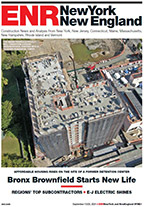Asia is one of the largest global construction markets, but projects there are increasingly shifting from greenfield to brownfield developments, bringing new risks and complexities to international firms.
"There's inherently more safety risk in doing work in an operating environment," said Phyllis Kulkarni, director of Independent Project Analysis in North America, who spoke on Sept. 16 at the Construction Users Roundtable's international workshop in Bonita Springs, Fla. Between 2009 and 2013, the number of Chinese greenfield projects dropped to 39% from 56%, according to IPA, while the number of existing plants being expanded, revamped or optimized rose.
"We're really seeing an interesting shift in capital work around the world," Kulkarni said. During the same time frame, construction labor costs in China rose to nearly 50% from 35% of comparable labor costs in the U.S. Gulf Coast, while owners in China became less reliant on foreign nationals for construction management. Productivity in China also has been increasing but is still about two-thirds less than comparable U.S. projects.
As such, owners are bringing work back to established markets, such as the U.S. and Mexico. "We're seeing the U.S. as a new frontier region," Kulkarni explained. "Construction management costs have decreased considerably as companies are relying less on ex-pats, but construction labor costs have been rising at a pretty rapid clip, meaning that China really isn't as competitive [with] some other developing regions as it used to be."
Companies that have been successful with brownfield projects "have taken the time to transfer lessons learned and good engineering practices from their home office," Kulkarni added. "They are the ones that have also invested time and built in good relationships with local design institutes."
Rong He, CEO of contractor Century 3 Asia Pacific Inc., illustrated how early engagement with local engineers can contribute to lower costs, shorter schedules and higher-quality facilities. Century 3 recently built two similarly sized luxury-automobile plants in China, one designed well in advance in Germany and another designed jointly with local Chinese engineers. The first plant's body shop finished in 26 months, not including piling work, while the second plant wrapped up in 19 months, including pilings. The former's body shop cost $1,178 per sq meter compared to $535 for the latter's, which also had a better-quality concrete floor.
Projects that take less turnaround time to "Chinatize" offshore development are finding greater success, said He.
CURT owners stressed a heightened sensitivity to safety as more projects shift to brownfield developments. "You're going to be doing more work on energized electrical panels, and you are going to be working in more confined spaces," said Chris Dummermuth, Americas region safety director for Merck & Co. Inc. CURT maintains a zero-accident objective on member projects, including those in emerging markets, he noted.



